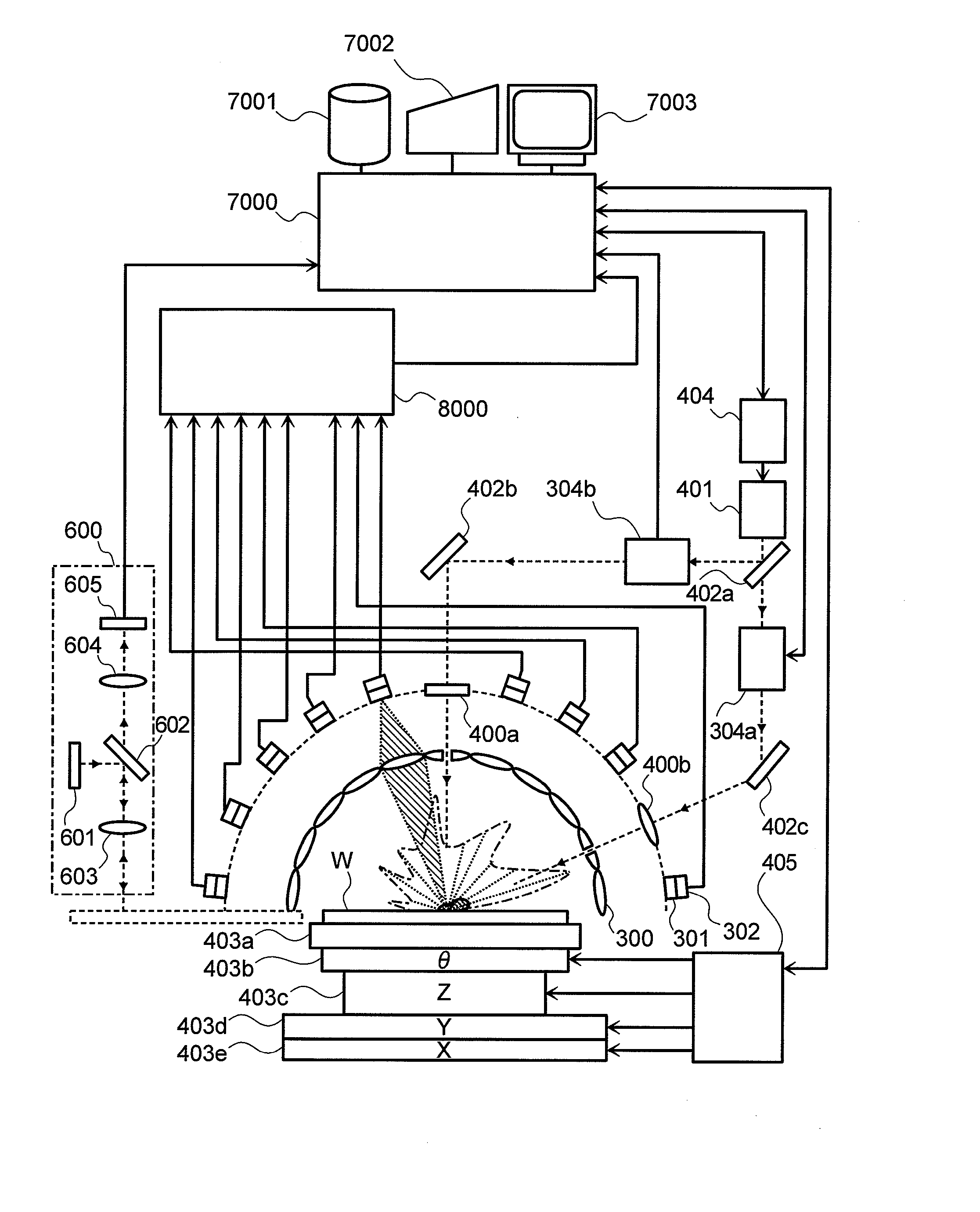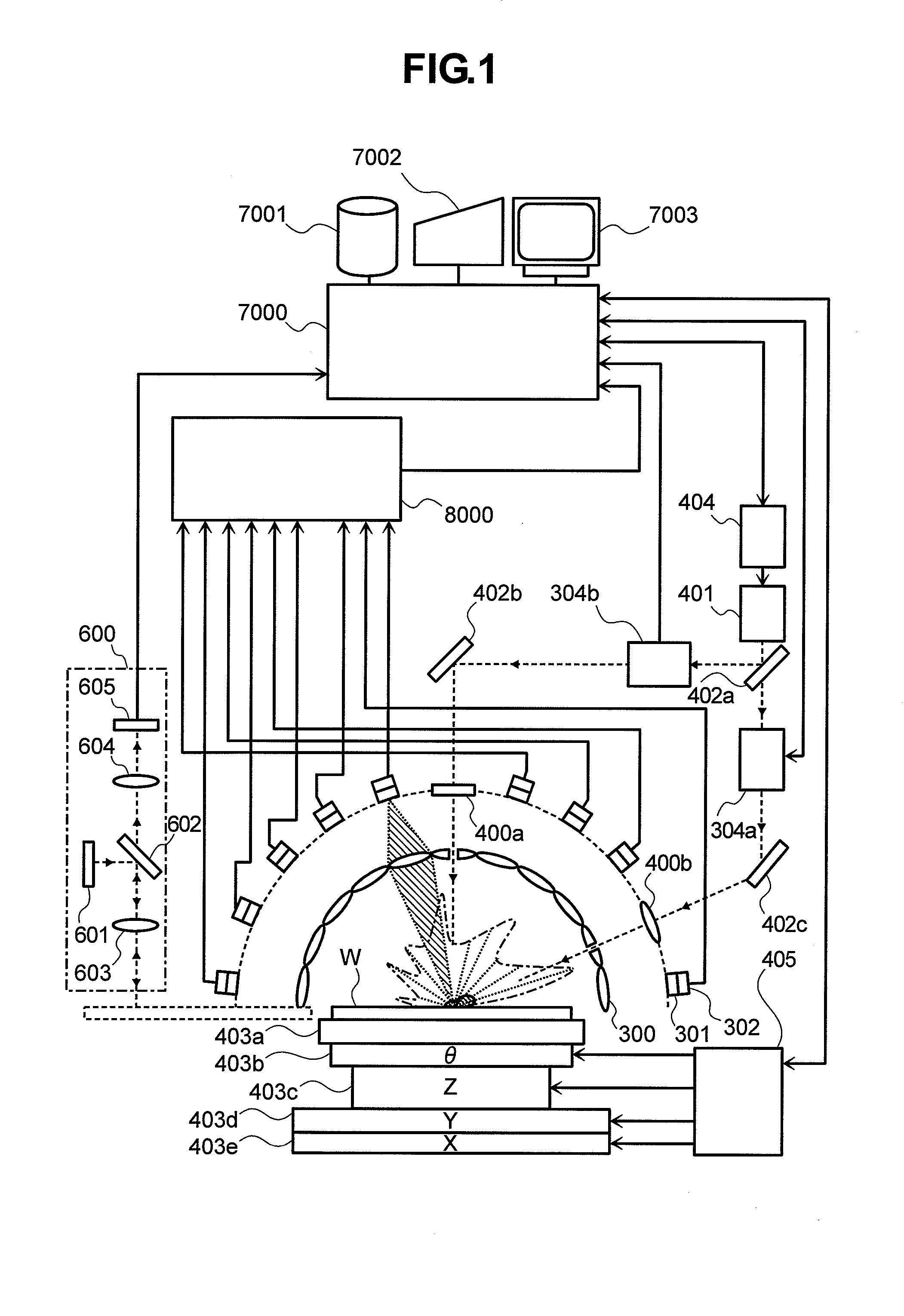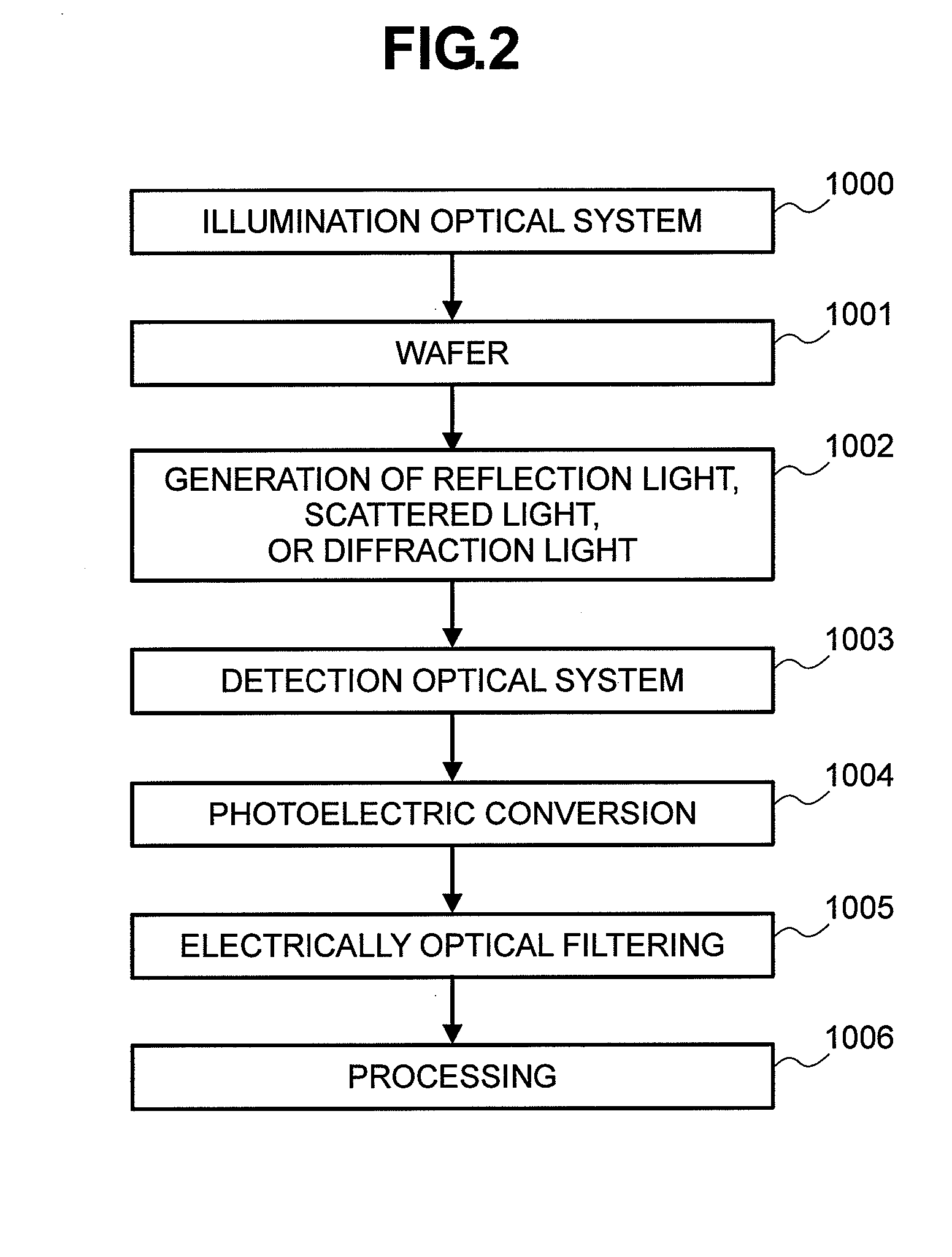Method and apparatus for detecting defects
- Summary
- Abstract
- Description
- Claims
- Application Information
AI Technical Summary
Benefits of technology
Problems solved by technology
Method used
Image
Examples
first embodiment
[0079] Next, the invention will be described with reference to FIGS. 1-23. The following description will be directed to detection of defects on a semiconductor wafer.
[0080] First, FIG. 1 shows an exemplary apparatus for detecting defects on a semiconductor wafer. As shown in FIG. 1, the apparatus is composed of a laser light source 401 for emitting laser light, a laser controller 404 for driving the laser light source 401, plural condenser lenses 300 for condensing scattered light coming from an inspection subject (semiconductor wafer) W and defects, 4-segmented polarizing plates 301 each for dividing scattered light detected by the corresponding condenser lens 300 into four polarization components, 4-segmented photodetectors 302 each for detecting the four respective polarization components, a signal processing section 8000, a computer 7000, a storage device 7001, an output device 7002, a display device 7003, a wafer chuck 403a, a θ stage 403b, a Z stage 403c, a Y stage 403d and a...
second embodiment
[0110] In view of the above, in the second embodiment, signals obtained are processed in the following manner. For example, assume that, as shown in FIGS. 30(a) and 31(a), illumination beams are applied to two patterns having different pattern pitches p1 and p2 at the same azimuth angle and elevation angle. In this case, generated diffraction beams have different pitches as shown in FIGS. 30(b) and 31(b). The distributions of diffraction beams at the pupil position are different from each other accordingly as shown in FIGS. 30(c) and 31(c). In the case of FIG. 29(a), the pattern pitch p1 is the same as in the case of FIG. 30(a) but the illumination light is applied at the different azimuth angle than in the case of FIG. 30(a) (φ1=90° in the case of FIG. 29(a) and φ1≠90° in the case of FIG. 30(a)). The distribution of diffraction beams at the pupil position shown in FIG. 29(c) is different from that shown in each of FIGS. 30(c) and 31(c). However, the pitch of the distribution of dif...
PUM
 Login to View More
Login to View More Abstract
Description
Claims
Application Information
 Login to View More
Login to View More - R&D
- Intellectual Property
- Life Sciences
- Materials
- Tech Scout
- Unparalleled Data Quality
- Higher Quality Content
- 60% Fewer Hallucinations
Browse by: Latest US Patents, China's latest patents, Technical Efficacy Thesaurus, Application Domain, Technology Topic, Popular Technical Reports.
© 2025 PatSnap. All rights reserved.Legal|Privacy policy|Modern Slavery Act Transparency Statement|Sitemap|About US| Contact US: help@patsnap.com



